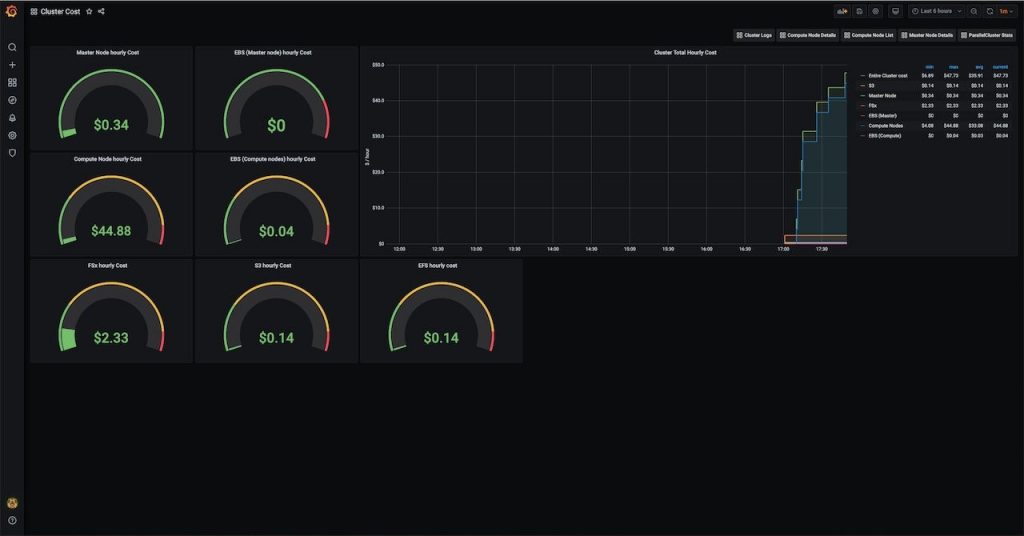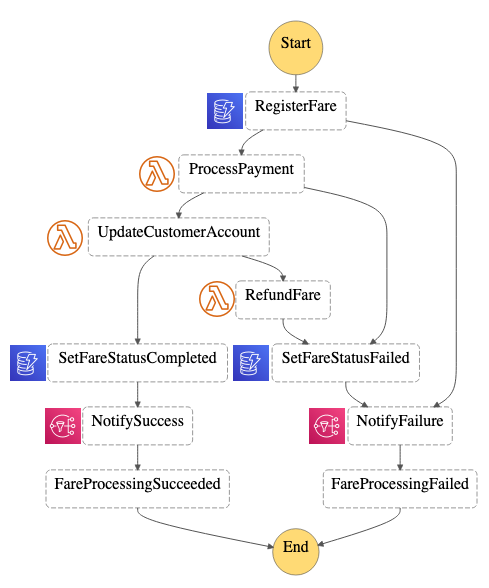AWS Compute Blog
Simplifying cross-account access with Amazon EventBridge resource policies
This post shows you how to use the new features Amazon EventBridge resource policies that make it easier to build applications that work across accounts. Resource policies provide you with a powerful mechanism for modeling your event buses across multiple accounts, and give you fine-grained control over EventBridge API invocations.
Monitoring dashboard for AWS ParallelCluster
This post is contributed by Nicola Venuti, Sr. HPC Solutions Architect. AWS ParallelCluster is an AWS-supported, open source cluster management tool that makes it easy to deploy and manage High Performance Computing (HPC) clusters on AWS. While AWS ParallelCluster includes many benefits for its users, it has not provided straightforward support for monitoring your workloads. […]
Tracking the latest server images in Amazon EC2 Image Builder pipelines
This post courtesy of Anoop Rachamadugu, Cloud Architect at AWS The Amazon EC2 Image Builder service helps users to build and maintain server images. The images created by EC2 Image Builder can be used with Amazon Elastic Compute Cloud (EC2) and on-premises. Image Builder reduces the effort of keeping images up-to-date and secure by providing […]
Performing canary deployments for service integrations with Amazon API Gateway
This post authored by Dhiraj Thakur and Sameer Goel, Solutions Architects at AWS. When building serverless web applications, it is common to use AWS Lambda functions as the compute layer for business logic. To manage canary releases, it’s best practice to use Lambda deployment preferences. However, if you use Amazon API Gateway service integrations instead […]
Application integration patterns for microservices: Orchestration and coordination
Using Wild Rydes, I show how to use Amazon SQS and AWS Step Functions to decouple your application components and services. I show you how these services help to coordinate and orchestrate distributed components to build resilient and fault tolerant microservices architectures.
Managing your AWS Outposts capacity using Amazon CloudWatch and AWS Lambda
This post is authored by Carlos Castro, AWS Principal Solutions Architect and Kevin Wang, AWS Associate Solutions Architect Customers are excited about using AWS Outposts to bring services and capabilities available on AWS to on-premises for workloads that require low-latency, local data processing, or local data storage. As part of this, the responsibility for managing […]
Getting started with RPA using AWS Step Functions and Amazon Textract
This post is courtesy of Joe Tringali, Solutions Architect. Many organizations are using robotic process automation (RPA) to automate workflow, back-office processes that are labor-intensive. RPA, as software bots, can often handle many of these activities. Often RPA workflows contain repetitive manual tasks that must be done by humans, such as viewing invoices to find […]
Using AWS Lambda extensions to send logs to custom destinations
You can now send logs from AWS Lambda functions directly to a destination of your choice using AWS Lambda Extensions. Lambda Extensions are a new way for monitoring, observability, security, and governance tools to easily integrate with AWS Lambda. For more information, see “Introducing AWS Lambda Extensions”. To help you troubleshoot failures in Lambda functions, […]
Application integration patterns for microservices: Running distributed RFQs
In this blog, I present the scatter-gather pattern, which is a composite pattern based on pub-sub and point-to-point messaging channels. It also employs correlation ID and return address. I show how this is implemented in the Wild Rydes example application. You can use this integration pattern for communication in your microservices.
Building Serverless Land: Part 2 – An auto-building static site
In this two-part blog series, I show how serverlessland.com is built. This is a static website that brings together all the latest blogs, videos, and training for AWS serverless. It automatically aggregates content from a number of sources. The content exists in a static JSON file, which generates a new static site each time it […]









